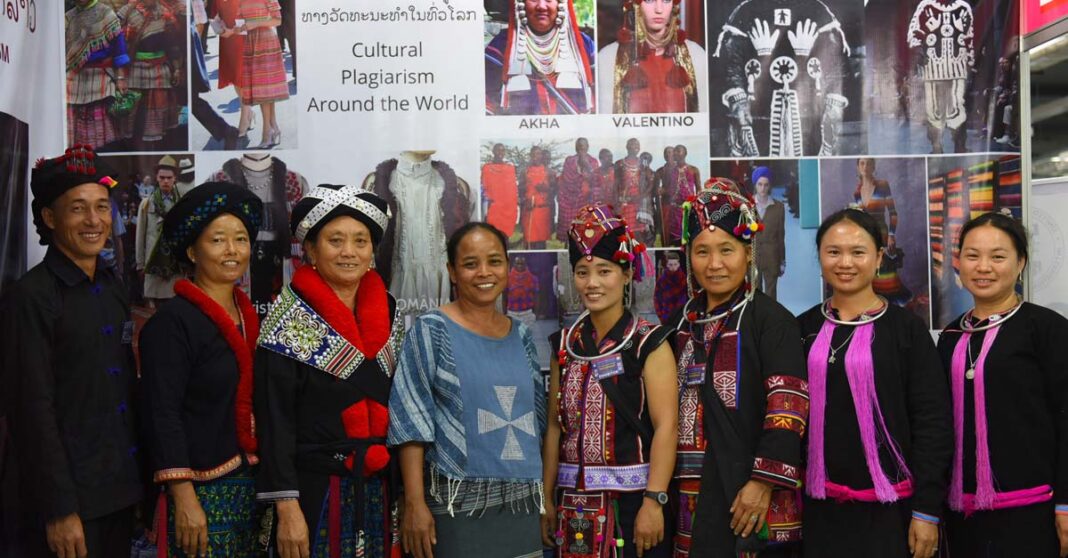The urgent need to protect handicraft-related intellectual property rights was discussed at the annual Lao Handicrafts Festival in Vientiane last week.
A panel discussion was organised by the Traditional Arts and Ethnology Centre (TAEC) and the Lao Handicrafts Association, with support from VOICE. The event drew panellists and participants from the legal sector and handicraft businesses, as well as young designers, village artisans, and non-governmental organisations.
Kicking off the talk, several experts in the field presented their knowledge about the subject. Ms. Monmany Yaganagi, an Intellectual Property (IP) specialist and Managing Director of Lao Interconsult Co., Ltd, reviewed the key IP tools currently used in Laos, including patents, trademarks, and copyrights. However, she acknowledged that not all of these fully protect traditional cultural expressions, such as textile designs.

Mr. Saybandith Sayavongkhamdy, of the Department of Intellectual Property (DIP), explained how these tools can be registered with the government, and also how the DIP is now engaged in Geographic Indication initiatives, such as Luang Prabang Silk, after the success of Khao Gai Noi from Xieng Khouang. He explained, “When we talk about GI, Europe is the strongest in this area. They have a lot of recognition of products by where they originate.”
Because of the current travel restrictions, Ms. Monica Bota-Moisin, the founder of the Cultural Intellectual Property Rights Initiative, was unable to attend as originally planned. Her recorded presentation clarified how “cultural appropriation” and “cultural appreciation” are different, and reviewed examples of how famous designers such as Tom Ford and Tory Burch had appropriated the traditional designs of communities. Sadly, she noted that such cases are quite common in the fashion industry.

Ms. Thongkhoun Soutthivilay, Co-Director of TAEC, confirmed this when she remarked, “A lot of these designers say they are ‘inspired’ by these traditional designs, but if you really look at them, you can see that they are simply copying them.” She closed the presentations by explaining the first-hand experience of the Oma ethnic group from Phongsaly Province, whose designs were plagiarised by the Italian fashion company Max Mara in early 2019.
The panel discussion that followed fielded questions ranging from the specifics of registering a line of similar designs to how business owners can protect original designs that they employ artisans to make.

It was the Oma/Max Mara incident that galvanised this effort by TAEC to start an initiative that raises awareness of the importance of cultural intellectual property rights and work with Lao artisans, craft businesses and organisations, and the government, to better protect Laos’ diverse traditional designs. Their project includes working with the Oma ethnic group on documenting their designs, producing learning materials and videos, one of which was shown at the Lao Handicrafts Festival, and creating a traditional design database model which can then be replicated by other handicraft producers in the future. They have also started a Facebook group to promote more sharing of resources and experiences related to this issue, called “ປົກປ້ອງລາຍດັ້ງເດີມຂອງປະເທດລາວ” (Protect the Traditional Designs of Laos).
More information can be found in English at www.taeclaos.org/oma and in Lao language on the Facebook group above. A follow-up event co-hosted by the Lao Handicrafts Association will take place in March 2021, to discuss further steps and expanding these activities to more ethnic groups and traditional artisans.



